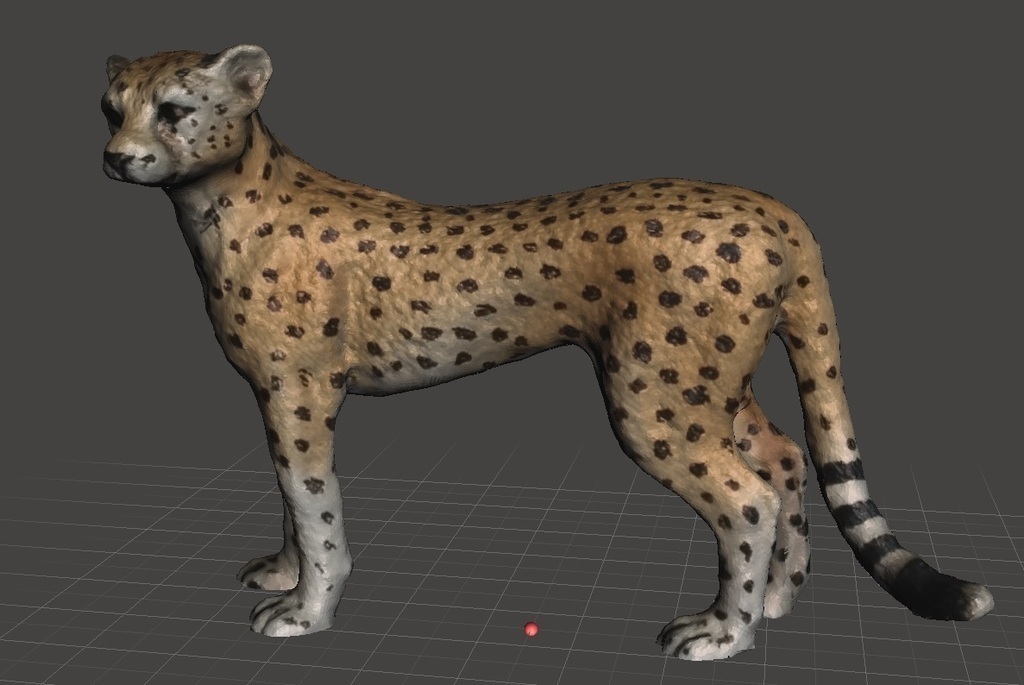
- CHEETAH 3D FOR 3D PRINTING HOW TO
- CHEETAH 3D FOR 3D PRINTING SOFTWARE
- CHEETAH 3D FOR 3D PRINTING PROFESSIONAL
- CHEETAH 3D FOR 3D PRINTING FREE
In the OpenSCAD file, I have provided a module that makes teardrops given a height and radius.Ī solution similar to the captive nut method for providing machine threads in 3D-printed plastics uses a type of threaded inserts designed for use in thermoplastics. A tight tolerance hole would need to be drilled. For holes with a loose tolerance, this will solidly hold a bolt or bearing. Teardropping limits overhangs to 45 degrees, making larger holes printable. The 8mm hole would likely print extremely poorly.įor larger holes, you can use a technique called teardropping. The 5mm hole would have some drooping plastic, and would need to be drilled out. Plastic has some rigidity, so I can print the 3mm hole fine as it is.

The images feature three holes, of 3mm, 5mm, and 8mm diameters from left to right. Part of design is just the way you think.Īssuming I have to print it upright, as shown in the picture, I have to make a call. If the part is just a block with holes, I could flip it on its back and print it flat, avoiding the overhangs. In the first image, you can see that the top of the hole is an overhang. In general, it is a good idea to follow the "45 degree rule." Simply put, don't design overhangs steeper than 45 degrees. In practice, the filament is more oval shaped (width/thickness ratio of 1.2 - 1.8), so steeper overhangs can be printed, but not much. Assuming that the plastic extruded from the nozzle is a cylinder (width/thickness ratio of 1), when printing an overhand of steeper than 45 degrees, the filament is extruded into open air.

Overhangs present a challenge to 3D printers without support material. I assume that you have some ability to do basic 3D design, and am only providing tips for optimizing designs for 3D printing. I will, however, share my source files for every step. It's much easier to make non-manifold objects with a mesh modeler than with a CSG modeler.Ī final note: Although I will be using OpenSCAD, this is not an OpenSCAD tutorial. In the interest of time, I refer you to this excellent article on the subject. One important thing to keep in the back of your mind is making sure your designs are manifold. Being able to assign dimensions to a variable and then generate the object from those allows you to make parametric designs. OpenSCAD has one especially powerful feature: variables. If you like to design mathematical forms, or really like writing code, OpenSCAD is for you (it has for loops). It uses a code-like design process, much like POV-RAY or other ray tracing programs. This means that you make your object by combining primitive forms. OpenSCAD is a CSG (constructive solid geometry) modeler. A tool like blender is a good option if you like to sculpt or "feel" out designs as you work. You can then shape these meshes into your designs. Blender is also a mesh modeler, meaning your designs are made of triangle meshes. Blender is a very powerful modeling and animation tool. One popular option for 3D work is Blender. For this article, I'll only use open-source cross-platform tools.
CHEETAH 3D FOR 3D PRINTING SOFTWARE
Your choice of software affects your design process, and to an extent the way you think about design.

CHEETAH 3D FOR 3D PRINTING FREE
In addition, learners who enroll in the course certificate will receive extended free access to Fusion 360 (provided by Autodesk).Software is important.
CHEETAH 3D FOR 3D PRINTING PROFESSIONAL
Learners who complete this course will be able to use 3D software to design a wide variety of objects for both personal and professional use.

This course is hands-on in nature and will provide step-by-step instructions to guide you through two popular 3D modeling programs, Tinkercad and Fusion 360. It will also demonstrate how 3D scanners work to turn physical objects into digital designs.
CHEETAH 3D FOR 3D PRINTING HOW TO
This course will demonstrate how to use 3D printing software to create digital designs that can be turned into physical objects.


 0 kommentar(er)
0 kommentar(er)
